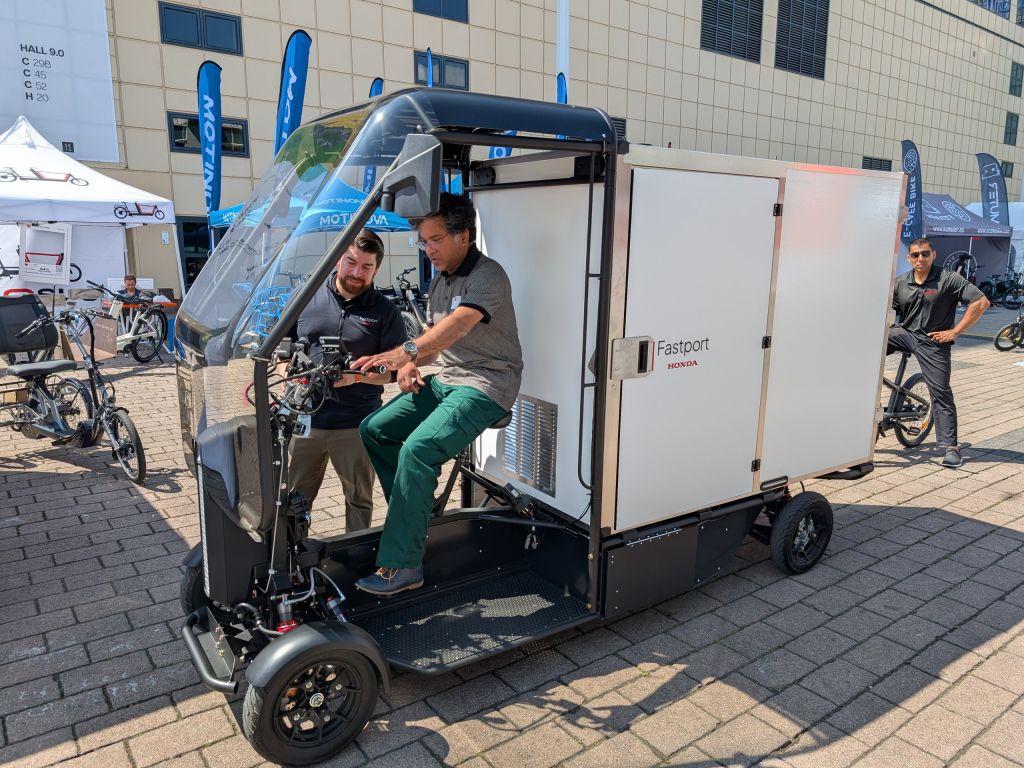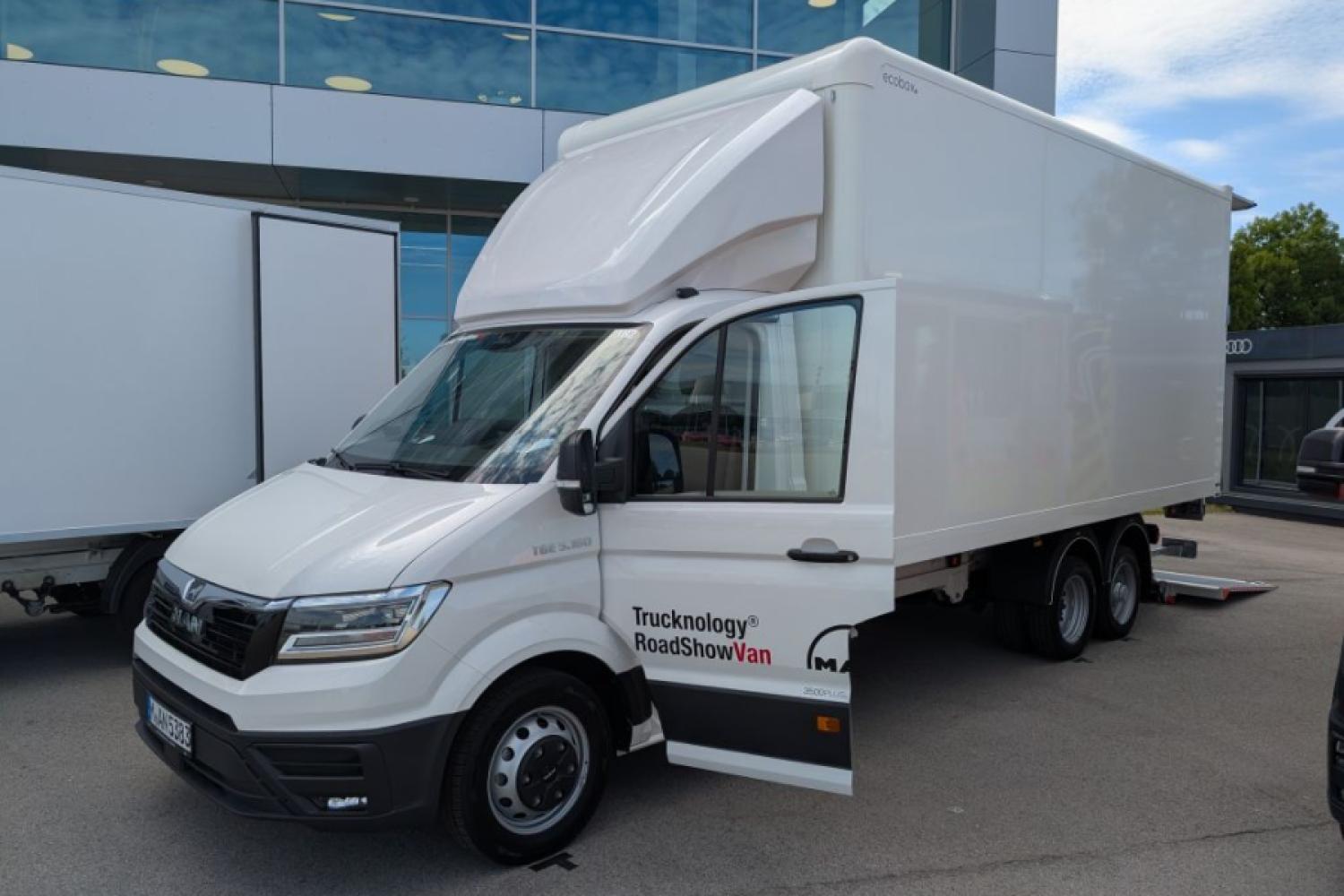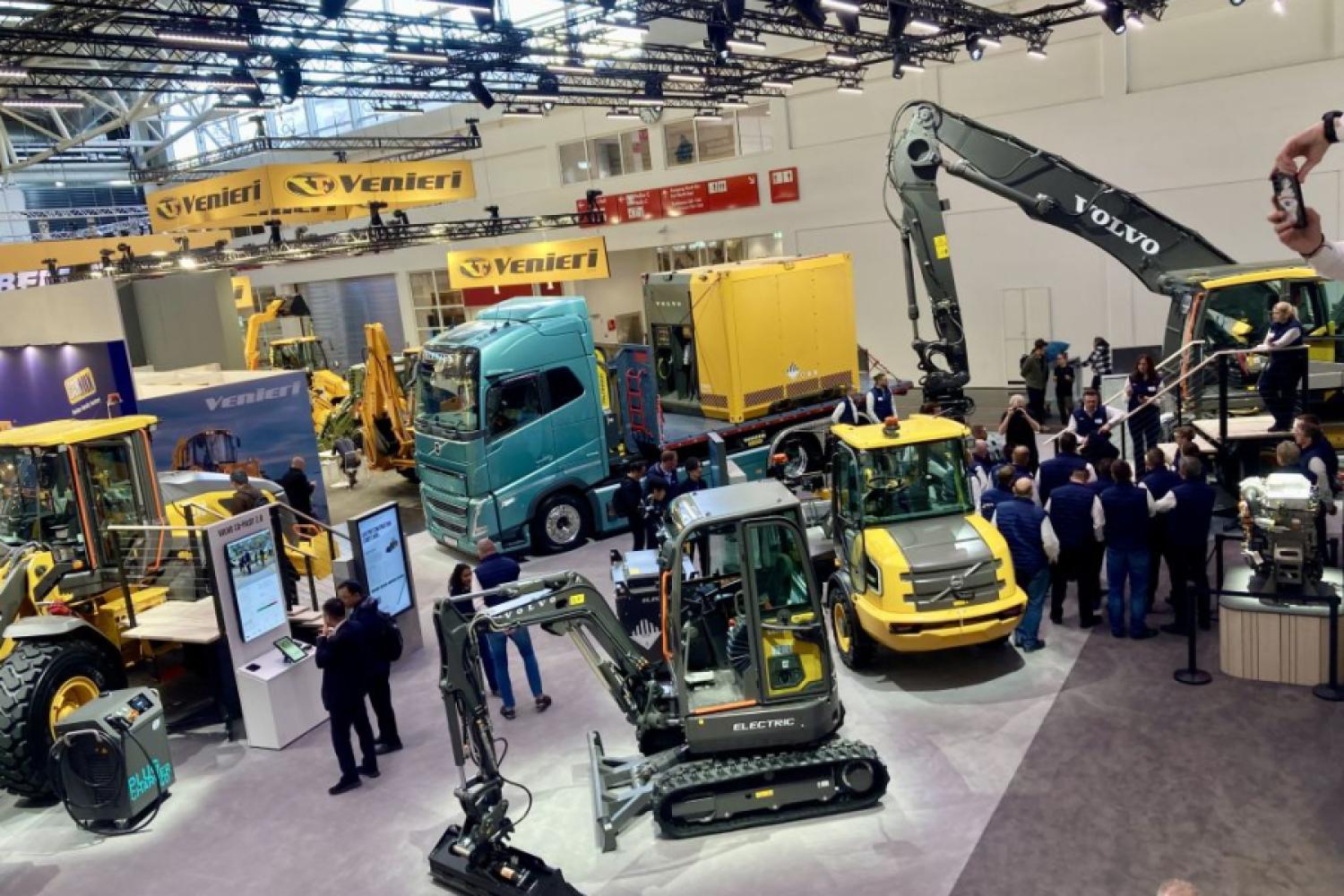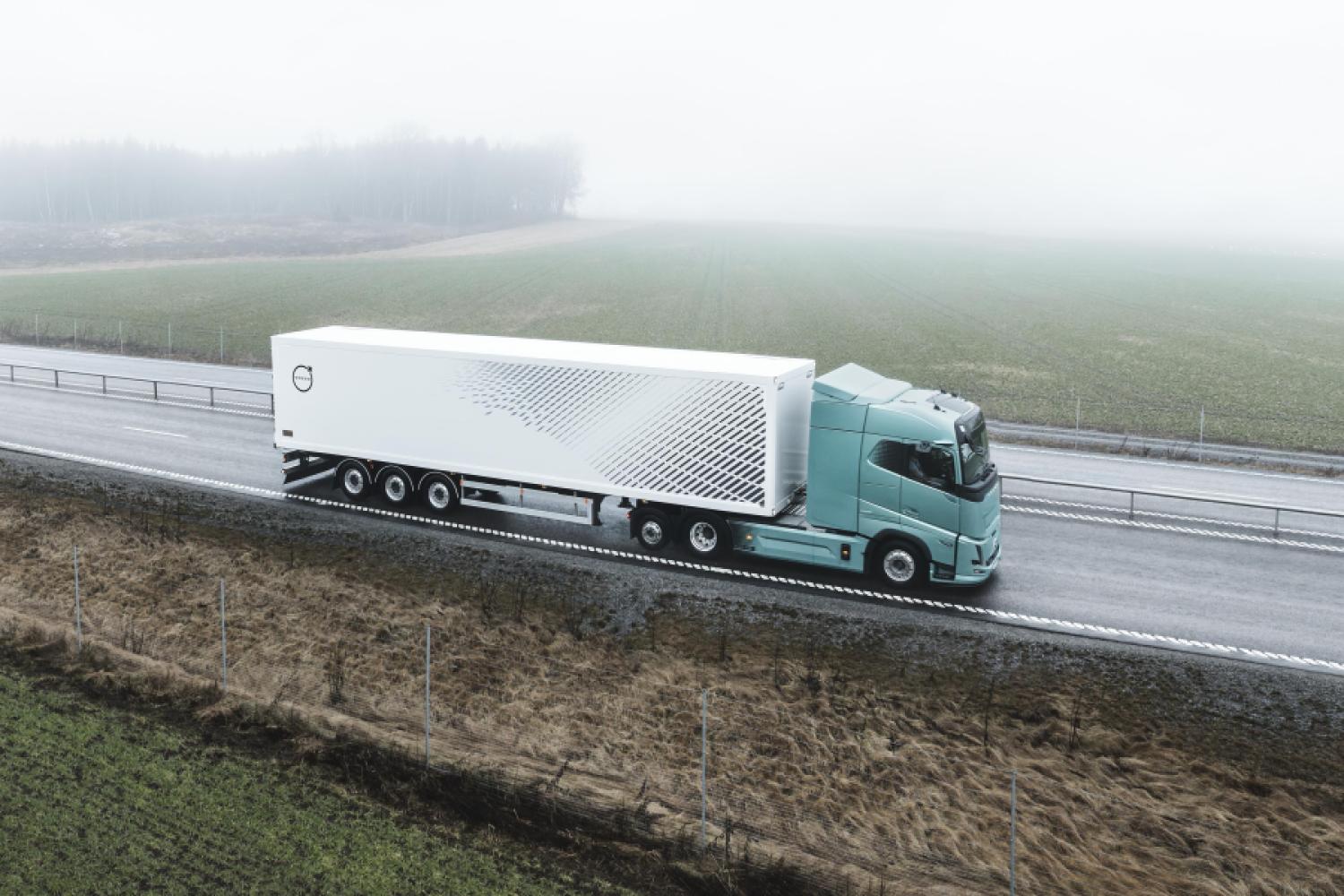With Honda, for the first time, a car manufacturer directly enters the cargo bike business at the Eurobike 2025 in Frankfurt. The launch is under the spin-off brand Fastport. The Japanese are sticking to what they know best, as the initial model named eQuad is almost as big as a small car for a "cargobike": 2.8 cubic meters of volume and even 3.3 cubic meters in the longer and wider version of the two, with a robust, RFID-lockable suitcase box available. This can easily replace a small transporter from a standstill.
Additionally, the Japanese rely on many parts from the motorsport department, their engineering know-how and leverage the synergies to the motorcycle division and, of course, to their own energy division. The cubic lithium-ion batteries (Honda Mobile Power Pack), each with a capacity of 1.3 kWh, can be easily swapped and carried and are located behind a flap under the body. They are supposed to suffice for a modest 40 kilometers of pedal assistance. An engine from the Munich provider Movaria, which is increasingly used in more bikes, provides the assistance.
Sits like a small car: Fastport eQuad
During a first test ride, the self-evidently four-wheeled Honda bike, with its chassis reminiscent more of a motor quad, felt very robust, torsion-resistant, rattle-free, and stable. Its driving characteristics are reminiscent of the "go-kart-like" Mubea Cargo, which also packs a lot of automotive expertise. The road holding is rather firm but also very safe; braking is carried out all round with disc brakes in steel rims enveloped by scooter tires or alternatively wear-free by simple back-pedaling, turning the e-motor into a generator and feeding roll energy back into the batteries. The bike's entire handling is straightforward and does not pose any mysteries.
The engine is always audibly present with a robust humming sound, but it does not really bother. The broad herringbone tread plate together with the low entry, further simplified by handrails on the structure, is well appreciated. Moreover, the center frame is flat enough to easily step over. Whether a bicycle saddle on a vehicle of this size is still appropriate or a seat would be better remains another question for the development until series production. The large plexiglass windshield serves as a frontal weather shield, but it could well extend down to the ground since, from experience, moisture comes from below when cycling.
Quite a big guy
There are even decent mirrors, which are necessary for this vehicle format: A meter in width for the small version might be the maximum in Europe to somehow still
be considered a "bicycle" and not break the usually tight urban framework. The automatic electric parking brake is pleasant, so the two motorcycle levers do not need to be engaged. Speaking of parking: At the front, there's a type of bumper meant to cushion impacts. An upright LED bar ensures visibility and the obligatory "light signature."
The "Commercial Cargobike" was developed from scratch in a fairly rapid "iterative process," as a project manager explains. The focus is clearly on the B2B area, which has fundamentally different requirements than the private sector. In the commercial sector, the primary targets are CEP services and the food trade. Production is planned to start in Ohio, USA, in 2026, with a quick scale-up intended to achieve an acceptable price level. The model is intended to be delivered in North America and Europe, but not in the home market of Japan.
Telematics is par for the course
The package is also set to include the obligatory telematics system and features of the currently trendy "Software Defined Vehicle" in the vehicle segment, allowing the bikes to be integrated into fleet management. Pilot projects in New York City and Munich have already run promisingly, reports the Fastport manager. Here, the greatest advantage of the heavy cargo bikes over transporters proved itself: The higher operational efficiency because, despite their considerable size of 3.40 and 3.65 meters in length, 1 and 1.2 meters in width, and a respectable 2.1 meters in height, the bikes are still bike-path compatible, not getting stuck in traffic and can almost park anywhere. Turning around isn't necessary: As with all quads, the steering lock is limited, resulting in a rather generous turning circle.
Honda's subsidiary sees itself as a "Service Provider," which means that the bikes will, of course, be offered for leasing and the appropriate maintenance will be "served" along if necessary. They aim for a pretty low-maintenance system and plan to establish a special network of workshop partners. "Fleet as a Service" is what the Hondans call it.
Vowag follows suit strongly
Whether the heavy-duty specialists from Vowag in Plauen will easily allow their territory to be contested is something you can safely doubt. As if in response to Honda's surprising move, a few stands away was parked the newly developed New Cargo M, which the manufacturer aptly titles as "Quarter-Bike." After all, the Vowag is considered "Heavy Metal" of the first order and enjoys a pretty robust reputation in the small but growing industry. They have addressed all the criticisms of the predecessor, which was once "International Cargobike
of the Year," and thoroughly improved the Cargo M, according to the responsible parties.
It starts with the significantly lower entry, where you would have previously thought of climbing a carriage bench. At Vowag, you immediately opt for a seat instead of a saddle, which is quite comfortable. The cockpit of the 2.65-meter-long and one-meter-wide Cargo M presents itself very tidy, even the cables still visible on the prototype are supposed to disappear in the steering column. The straight optics of the concept, which revolves around a central profile frame and allows for modular constructions, from the classic box to flatbeds to the "Himmelfahrtskommando" we drove, a passenger transporter with nice wooden benches, is also neat.
Well cushioned, not shaken: Vowag rides excellently
Right off the bat a good practical test: As "cargo" on the back, we feel quite well cushioned, the multi-link construction, still in rod form for the prototype but in leaf spring form in the series version, dampens the roughest nuisances well. As usual, the Vowag is still stable and firm on the road, it can be easily and, in any case, precisely steered with a little more effort on the handlebars. The steering lock is also larger than on the Fastport, so the turning circle is smaller, a respectable six meters, for a quad.
Vowag also relies on the chainless and low-maintenance drive from Movaria, where the preferred pedaling frequency can be set and, once you start pedaling, the always-present but never annoying engine with its 420 Nm takes over the pulling work. As soon as you pedal backwards, energy is recuperated or deceleration happens, which saves the generously sized motorcycle brake discs in the large cast wheels. Pleasant during slow driving is the gear ratio, which allows for sensitive maneuvering.
All things considered, expensive like a car - but strong like a van
Energy for up to 100 kilometers of pedal assistance is provided by four AES 48-Volt batteries inserted below the frame, but they are additional to the initially tempting base price of 10,900 euros, at 1,200 euros each... Well, the box then also costs another 4,450 euros, features like the meaningful "keyless go," solar module on the box, rearview camera, weather protection, windshield wiper, spare wheel, or storage compartment extra. Thus, the Vowag easily turns into a 20,000-euro object. But the 150-kilo heavy, up to 650 kilos licensed "Quarterbike" can also replace a transporter - saving mightily in operation.
VOK: On the brink of scaling
This is also supposed to apply to the VOK XL, which is set a level
lower and more compact than the Vowag or even the Honda: The start-up from Estonia is already frequently found "in the streets of London" and is on the verge of scaling, as it says at the stand. The hope: This could also lead to further price reductions; medium-term, a heavy cargo bike should cost less than 10,000 euros, according to the responsible parties as a target mark. In times of still small quantities, the VOK comes fully equipped with a robustly made 2-cubic-meter box with two side wing doors for 14,490 euros, offers a reasonable 200-kilo payload with a 241-kilo unladen weight, and presents itself very compact at 3.23 meters in length, 920 millimeters in width, and 1.84 meters in height compared to the XXL bikes.
The provider, following the "Model Tesla," relies on the highest possible proportion of in-house developments: The four wheel hub motors, which run very quietly and very powerfully (each 130 Nm!) and, of course, traction-strong in every situation, have as well been self-developed as the practical and easily removable 2.3 kWh suitcase battery under the quite comfortable seat. The entry here is even more direct than with Vowag or Fastport, the steering rod "hangs" a bit high and could be telescopic - or the seat adjustable in height. The weather protection, including a wiper, gives a robust impression, as do the solid cast wheels and stable tires.
Four motors provide all-wheel drive
Of course, the "techies" from Estonia have integrated IoT connectivity via GPS and telematics. Safety is also a priority: There is an e-ABS, traction control in the 16-inch wheels, and the steel frame conveys a certain crash safety. But you often don't need the brakes here, either: By back-pedaling, you activate recuperation, strong enough to handle most situations without the two brake levers. Here, too, the pedal feeling is adaptable, but clearly, as natural as a chain drive, the "digital drives" never are. But if they are low-maintenance, so be it. The VOK suspension does a smooth job with independent wheel suspension at the front and rear, the road holding is flawless thanks to the low center of gravity, and the handling is agile. Conclusion: The VOK is an extremely uncomplicated companion in everyday delivery life, easily undercutting the usual bollard measurements and remaining suitable for underground car parks.
With its competitors, it's certainly a hot contender for our next "International Cargobike of the Year" award at the IAA Transportation 2026. We are very excited and look forward to many applications next June! Cargo, at any rate, can be increasingly






